Abstract
A probability can be viewed as an estimate of a variable that is sometimes 1 and sometimes 0. To have validity, the probability must equal the expected value of that variable. To have utility, the average squared deviation of the probability from the value of that variable should be small. It is shown that probabilities of paternity calculated by the use of Bayes' theorem under appropriate assumptions are valid, but they can vary in utility. In particular, a recently proposed probability of paternity has less utility than the usual one based on the paternity index. Using an arbitrary prior probability in the calculation cannot lead to a valid probability unless, by chance, the chosen prior probability happens to be appropriate. Appropriate assumptions regarding both the prior probability and gene or genotypic frequencies can be estimated from prior experience.
Full text
PDF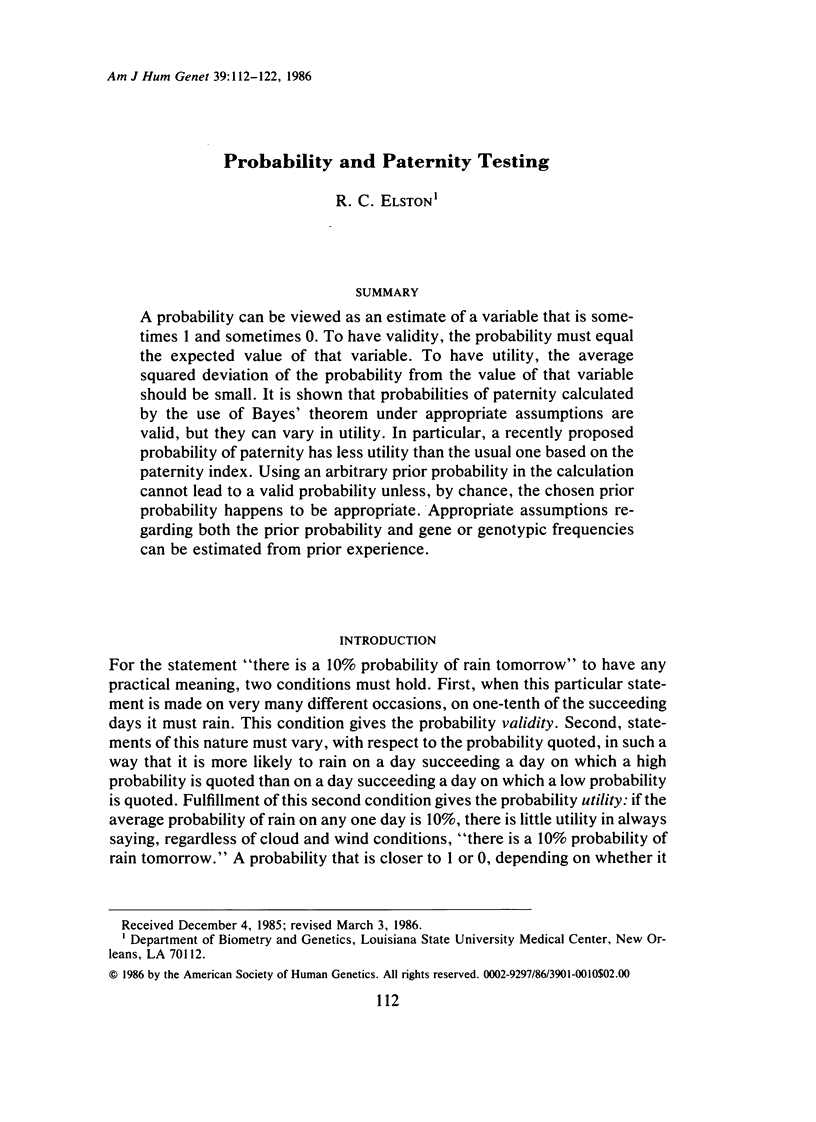
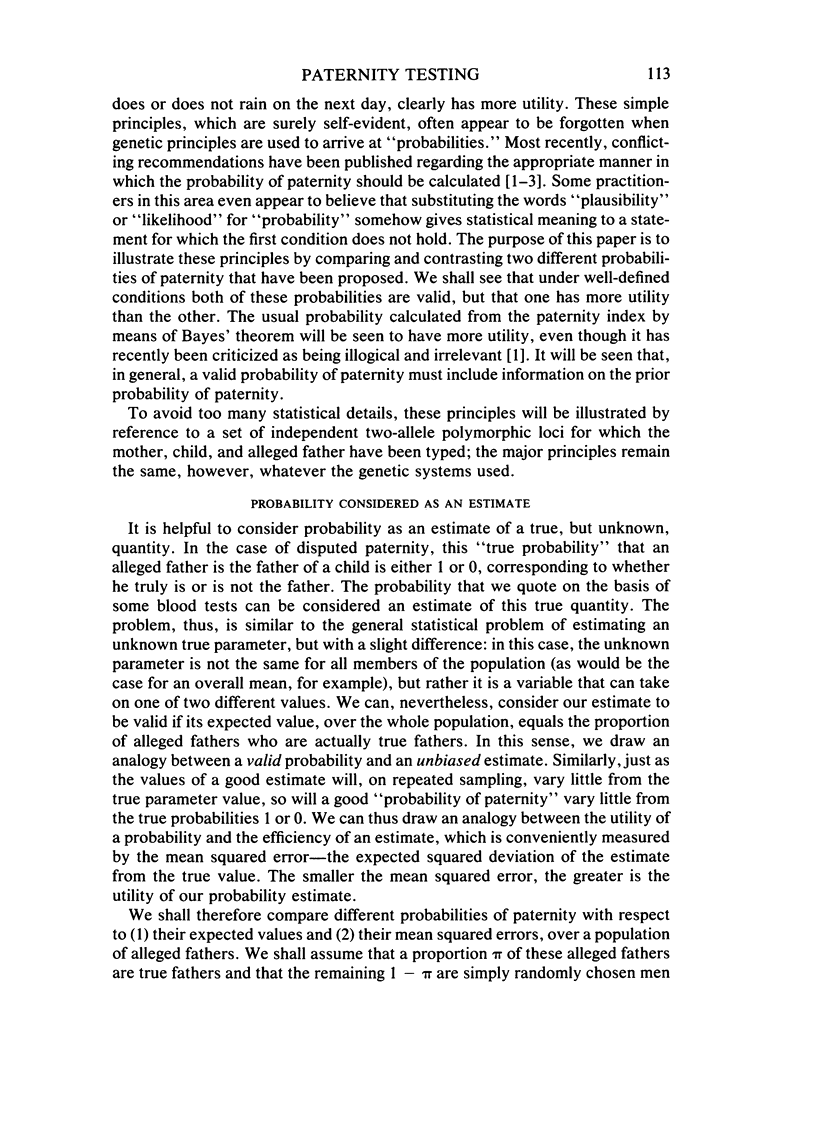
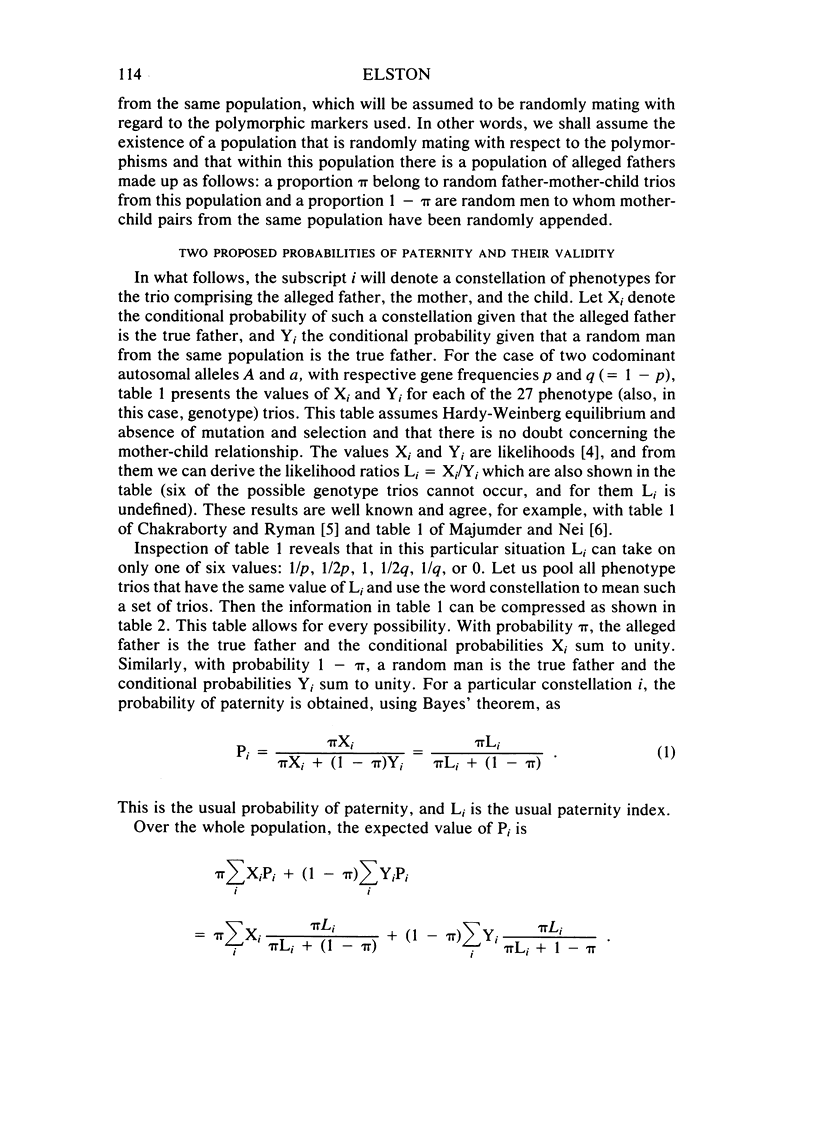
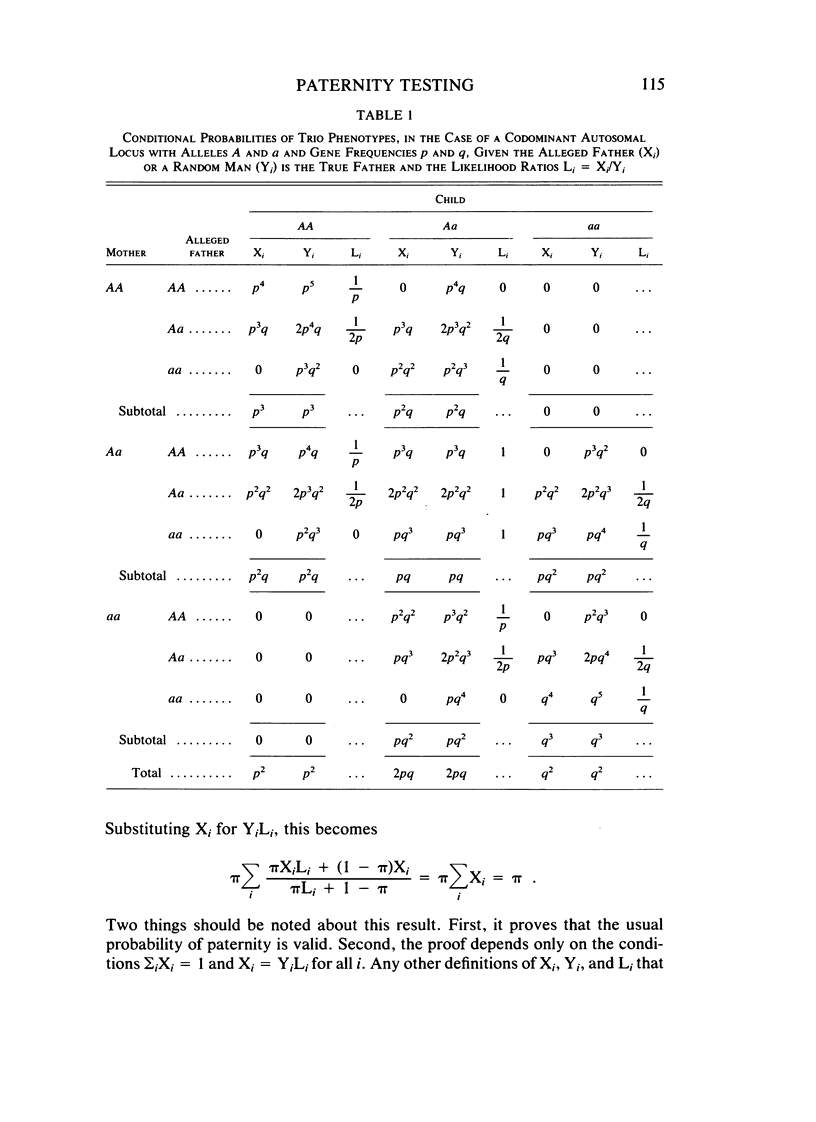
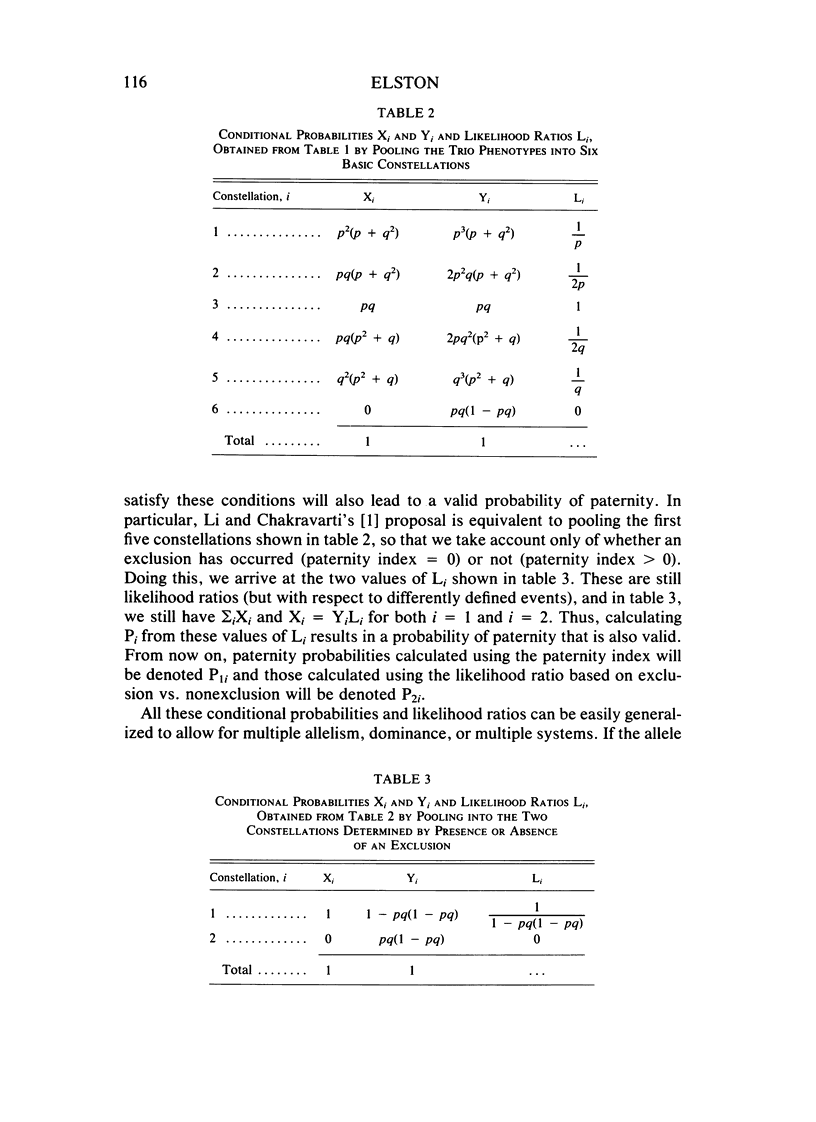
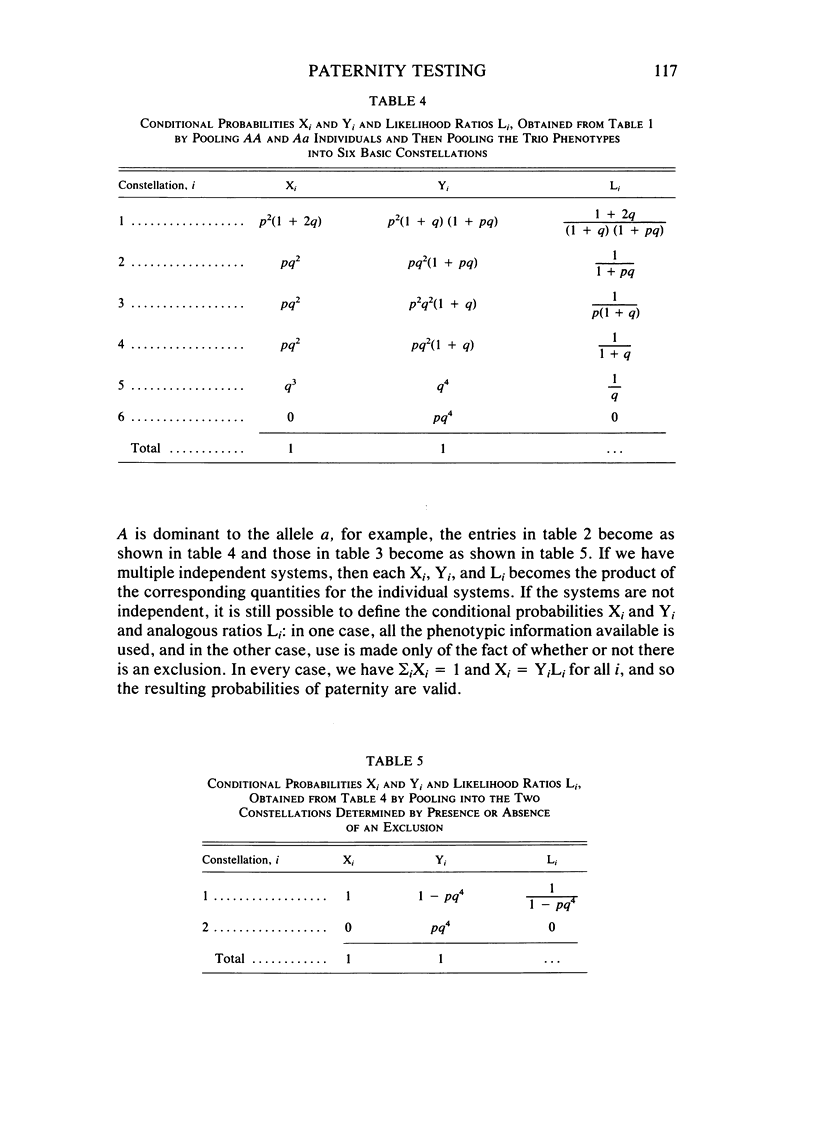
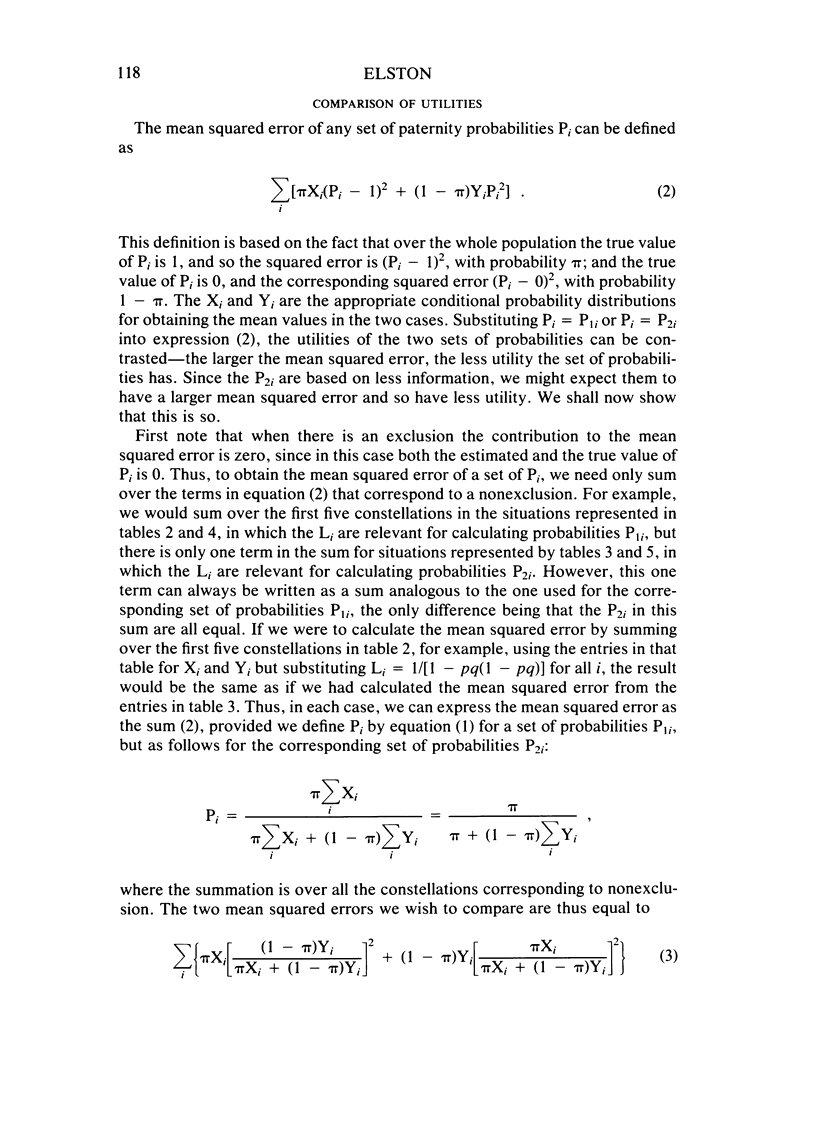
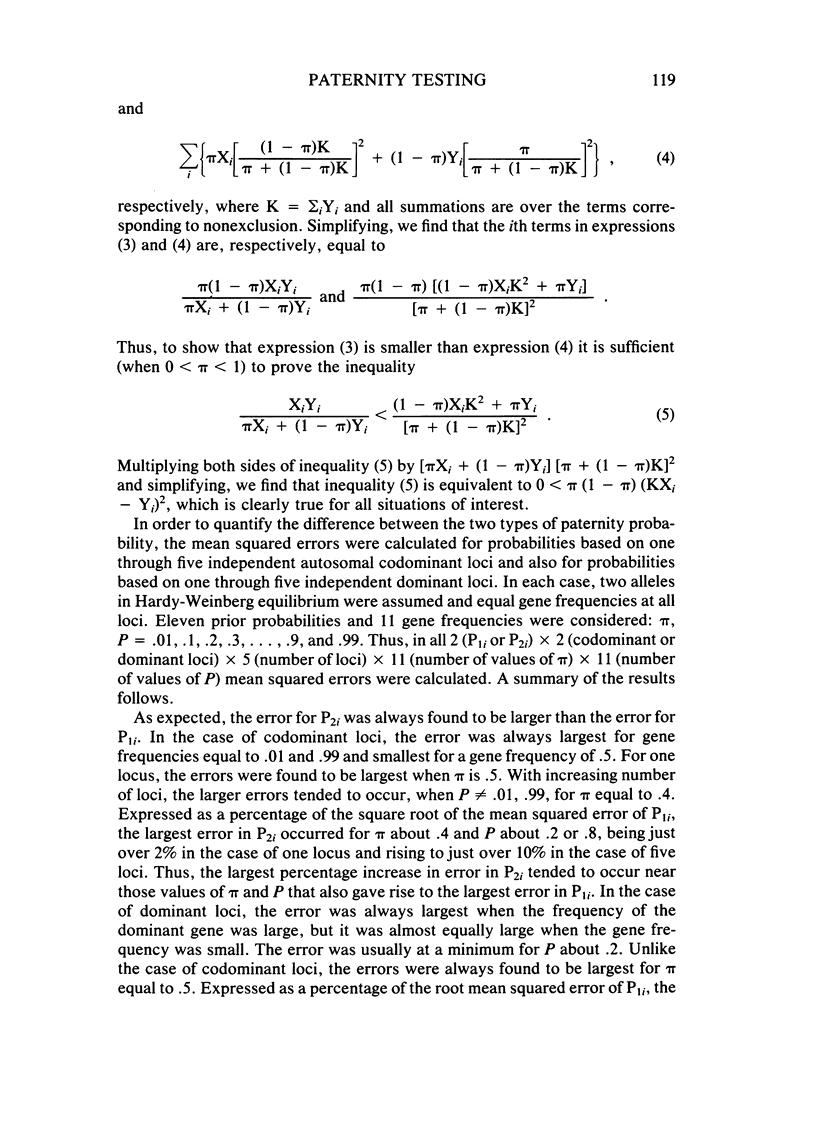
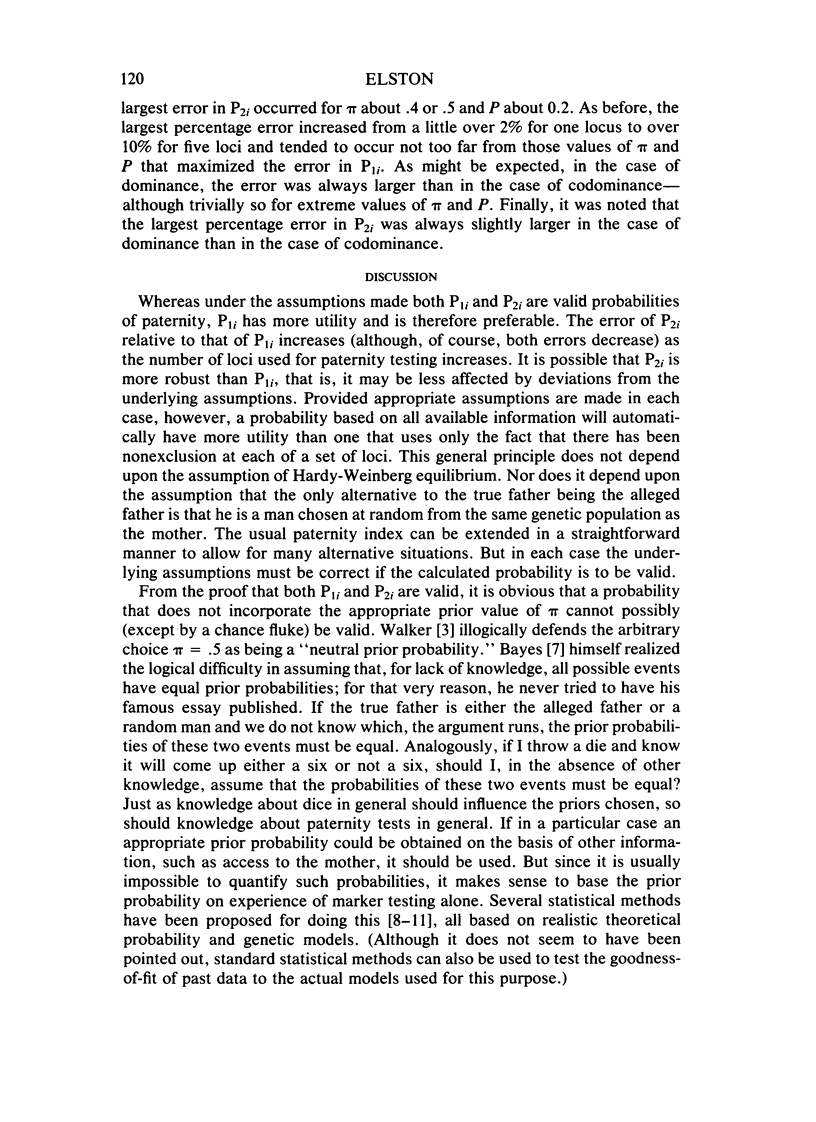
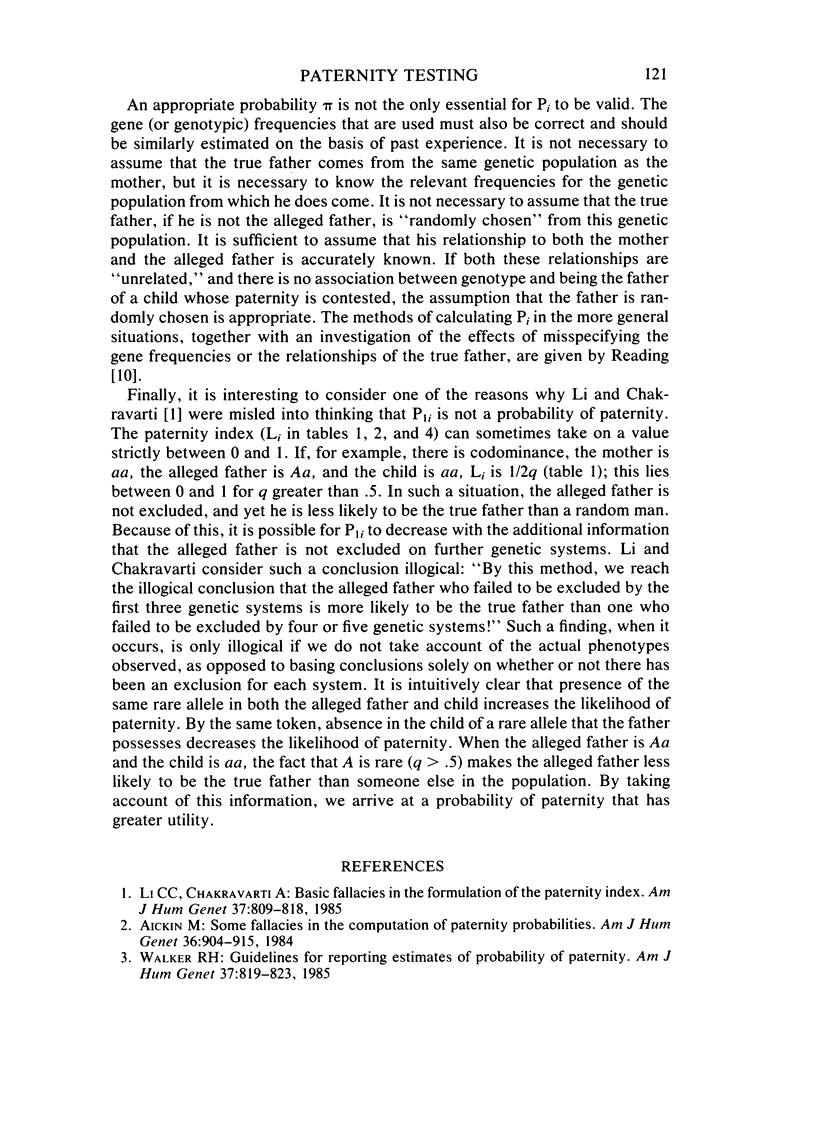
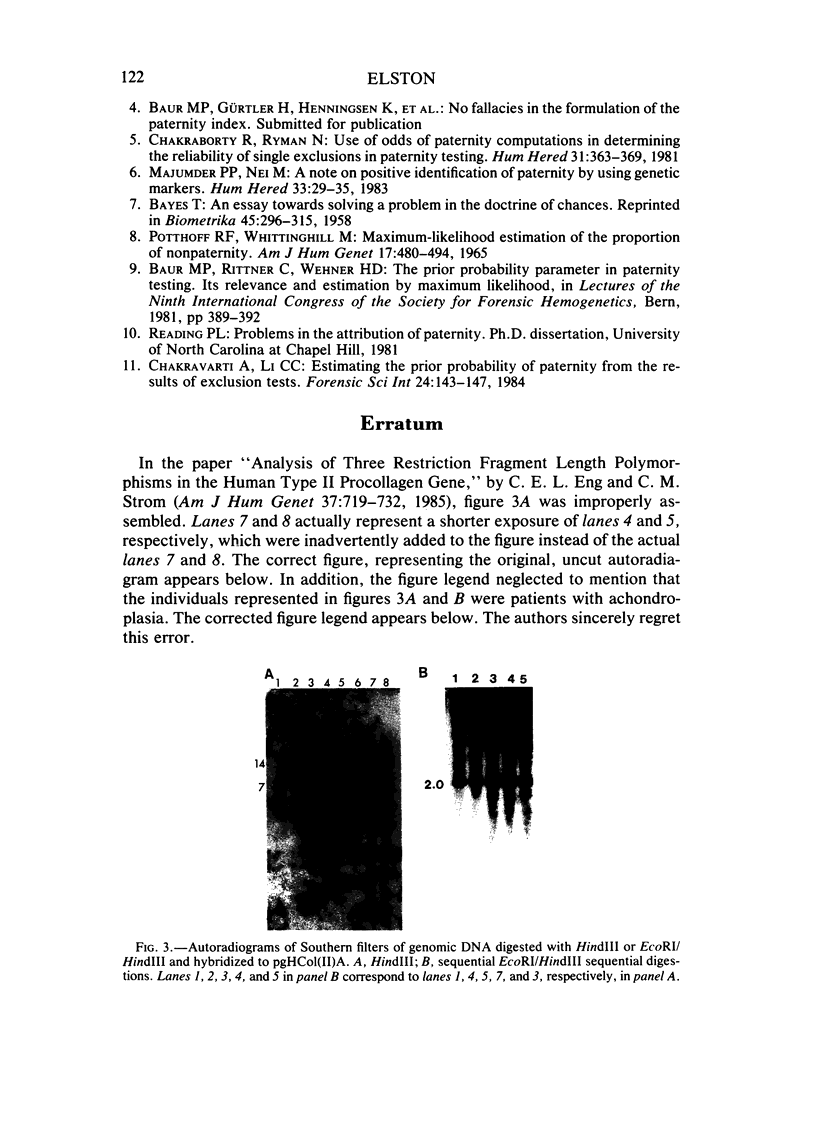
Images in this article
Selected References
These references are in PubMed. This may not be the complete list of references from this article.
- Aickin M. Some fallacies in the computation of paternity probabilities. Am J Hum Genet. 1984 Jul;36(4):904–915. [PMC free article] [PubMed] [Google Scholar]
- Chakraborty R., Ryman N. Use of odds of paternity computations in determining the reliability of single exclusions in paternity testing. Hum Hered. 1981;31(6):363–369. doi: 10.1159/000153239. [DOI] [PubMed] [Google Scholar]
- Chakravarti A., Li C. C. Estimating the prior probability of paternity from the results of exclusion tests. Forensic Sci Int. 1984 Feb;24(2):143–147. doi: 10.1016/0379-0738(84)90094-x. [DOI] [PubMed] [Google Scholar]
- Li C. C., Chakravarti A. Basic fallacies in the formulation of the paternity index. Am J Hum Genet. 1985 Jul;37(4):809–818. [PMC free article] [PubMed] [Google Scholar]
- Majumder P. P., Nei M. A note on positive identification of paternity by using genetic markers. Hum Hered. 1983;33(1):29–35. doi: 10.1159/000153343. [DOI] [PubMed] [Google Scholar]
- Potthoff R. F., Whittinghill M. Maximum-likelihood estimation of the proportion of nonpaternity. Am J Hum Genet. 1965 Nov;17(6):480–494. [PMC free article] [PubMed] [Google Scholar]
- Walker R. H. Guidelines for reporting estimates of probability of paternity. Am J Hum Genet. 1985 Jul;37(4):819–827. [PMC free article] [PubMed] [Google Scholar]



